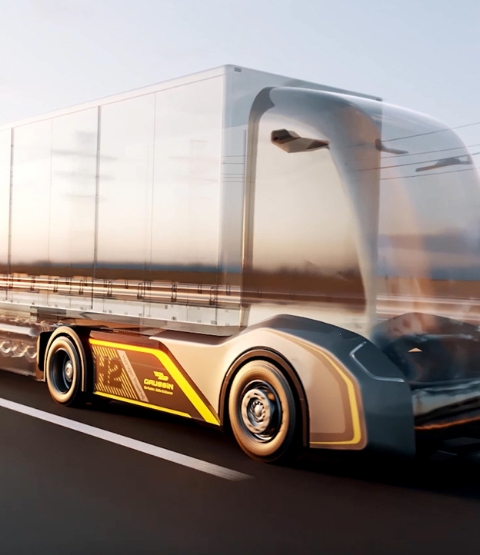
AI : The digita twin, an unavoidable ally of haulage companies ?
Artificial intelligence has many applications in road transport. Smart navigation systems guide drivers to the fastest and safest routes, taking account of real-time traffic conditions. Autonomous trucks, equipped with sophisticated sensors and advanced software, transport goods over long distances without human intervention, providing a promising solution to driver shortages and reducing logistics costs. Artificial intelligence is primarily used to manage freight traffic. "In view of the sector's major environmental challenges, what we needed was the ability to measure. The next step is the ability to pool and consolidate. The key is data exchange,” says Guillaume Desveaux, chairman of the IA Cargo Foundation. In this way, it is possible “to create digital twins of flows to see where we can apply lever optimisations at the next level of route optimisation.”
Teleroute has launched Europe's first Artificial Intelligence recommendation engine dedicated to road freight. With SuggestionsTeleroute, members of the freight marketplace benefit from a continuous stream of new routes and loads available in real time, selected on the basis of their relevance in terms of efficiency and profit. This AI engine analyses historical platform usage data to identify patterns, anticipate needs and provide each member with attractive offerings.
Alpega worked with AI specialist ML6 to develop this solution. STEF was among the first to embrace artificial intelligence. Three years ago, the carrier entrusted the optimisation of its transport plans to DCbrain, which specialises in AI applied to complex physical networks. STEF then deployed INES (Intelligent Network Solution) by integrating the solution into its information system, enabling it to rationalise and optimise its transport plans and the activities of its branch network. The innovative hybrid AI technology uses a digital twin. To analyse the data from its networks and convert it into business decisions, STEF uses databases and datasets in the form of relational graphs to create digital doubles (a dynamic digital model of the physical network) and integrate the complexity of a network. STEF can thus simulate its transport plans (overall and branch by branch), predict events, identify anomalies and make optimisation recommendations in real time.
AI, a tool to help measure energy
Smart metering devices, energy management systems and the Internet of Things (IoT) provide tools for measuring, analysing and optimising energy consumption. For instance, Hankook has opted to integrate artificial intelligence to offer tyres with even more advanced performance. The tyre manufacturer is launching a platform in collaboration with Amazon and Snowflake. The project aims to establish an integrated data analysis environment, exploiting the latest advances in artificial intelligence (AI) and machine learning (ML). It will do so by leveraging the AWS data lake and analytics infrastructure, including Sagemaker and AutoML, and using Snowflake as a data warehouse to facilitate cloud migration and digital transformation. The cloud-based data analytics platform will host both internal and external data from Hankook's research and development, production, and quality assessments, in addition to external sources such as mobility players or market research. The company also aims to optimise the development of new products and resolve any quality issues by analysing manufacturing data.
On a similar subject: Data in support of the energy transition (in French)
AI and safety : an indispensable equation
However, the introduction of artificial intelligence into road transport also raises ethical, legal and social issues. The security of autonomous systems remains a major concern, as any malfunction could have disastrous consequences on the road. While AI offers innovative possibilities for analysing, interpreting and using data on a large scale, it also poses major challenges in terms of protecting the confidentiality and security of sensitive information. AI algorithms themselves can present security vulnerabilities. Attacks aimed at manipulating AI models could have serious consequences, such as erroneous or biased decisions. To meet these challenges, it is essential to adopt robust security measures at every stage in the lifecycle of data and AI models. This includes securing data storage and processing infrastructures, implementing rigorous authentication and authorisation protocols, and implementing advanced cryptographic techniques to protect data in transit and at rest.
Despite these challenges, the future of road transport seems undoubtedly tied up with artificial intelligence. By combining human and technological capabilities, we can envisage a future where roads are safer, more efficient and more sustainable, thanks to the rise of this new era of intelligent automation.

This article is an excerpt from the special edition of SOLUTRANS LE MAG dedicated to the ‘Rencontres de la Filière by SOLUTRANS’. Find this publication, as well as many other articles relating to the world of TRM (use of AI, new legislative frameworks, internal combustion engines, etc.) by downloading the e-magazine (in French only) free of charge!

